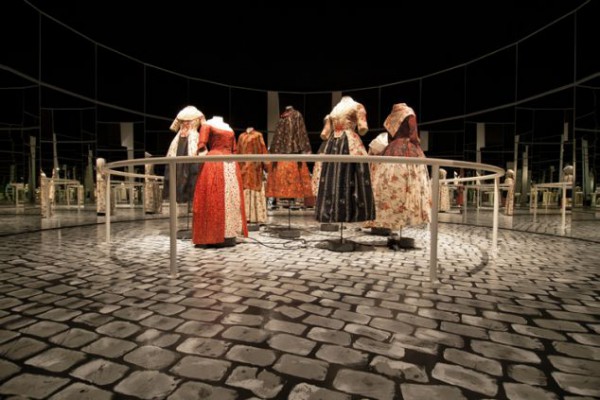
Cotton chintzes have a special place in the Jacoba de Jonge collection. Their colourful, exuberant patterns attract immediate attention, and this was certainly true when these fabrics were first imported into Europe from India, back in the 15th century.
From the mid-18th century, printed cottons and woven linen fabrics had become increasingly popular. Multicoloured, hand-printed and hand-painted cotton produced in India and imported into Europe, saw such enormous success in the latter 17th and early 18th centuries that the local silk, wool and linen manufacturers mounted official protests. This led to the prohibition of their import and use in France, England and elsewhere. The northern Countries did not impose such an embargo, with the result that chintzes remained a more prominent presence in people’s wardrobes. After 1750 when government policies on printed cottons were relaxed in France and England, local entrepreneurs and traders responded with the manufacture of local products.
The first chintz had exotic patterns of fruits, birds, flowers and wildlife, the inspiration came from the observation of the exhuberant vegetation and fauna in India, Java and Iran. Order in chaos was the fundamental principle in design.
Repetition, alternation, expansion, synthesis were the rules. Chintz is usually made of cotton and often glazed to preserve the fabric and design. It was hand-drawn and dyed fabric from India.
The early chintzes were used for bed coverings and hangings, tablecloths, quilts and clothing.
These days, the English glazed chintzes are considered the finest in the world, cause textile manufacturers developed a was rasin process to replicate the shiny finish found in the imported fabrics.
Printed cottons of that period were washable, and in an age when personal hygiene was becoming more important, this was not an insignificant factor. In addition to this characteristic, attractive prices and fashion appeal helped win printed cottons a place in contemporary culture.
They were especially loved for less formal clothing, such as jackets, skirts and dressing gowns. The success of the chintzes also led to them being copied on the European continent, with manufacturers trying to use textile printing techniques to intimitate the original painting and printing methods.
Based on the catalogue â€کLiving Fashion’
By Wim Mertens





















